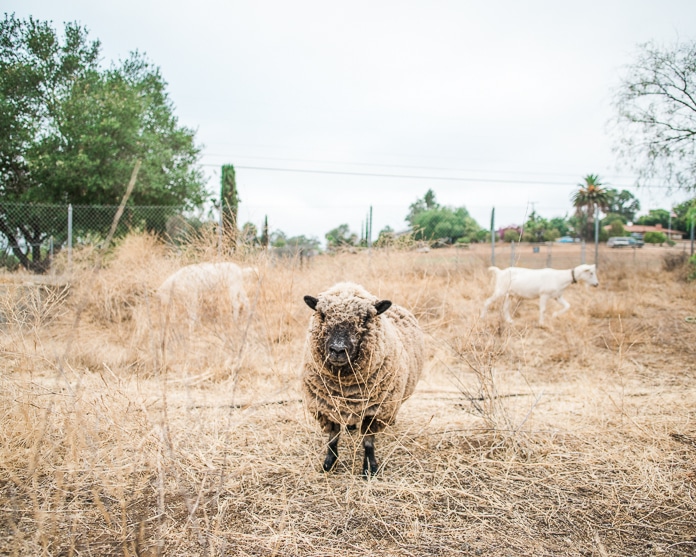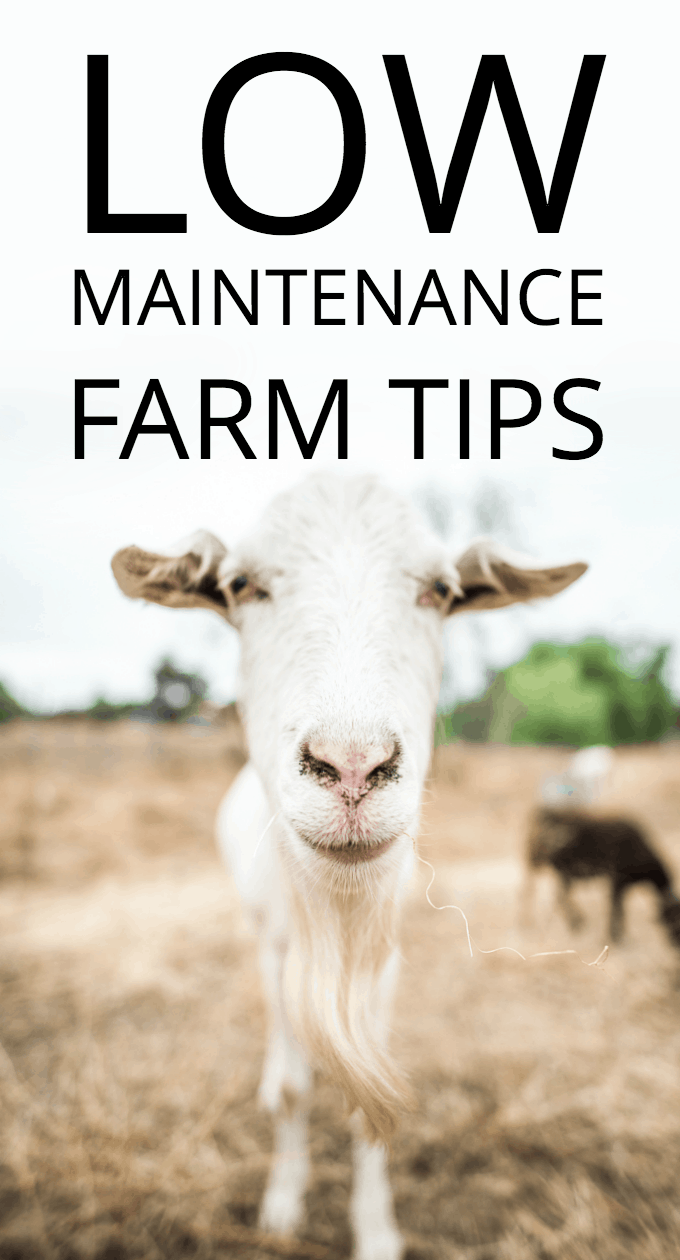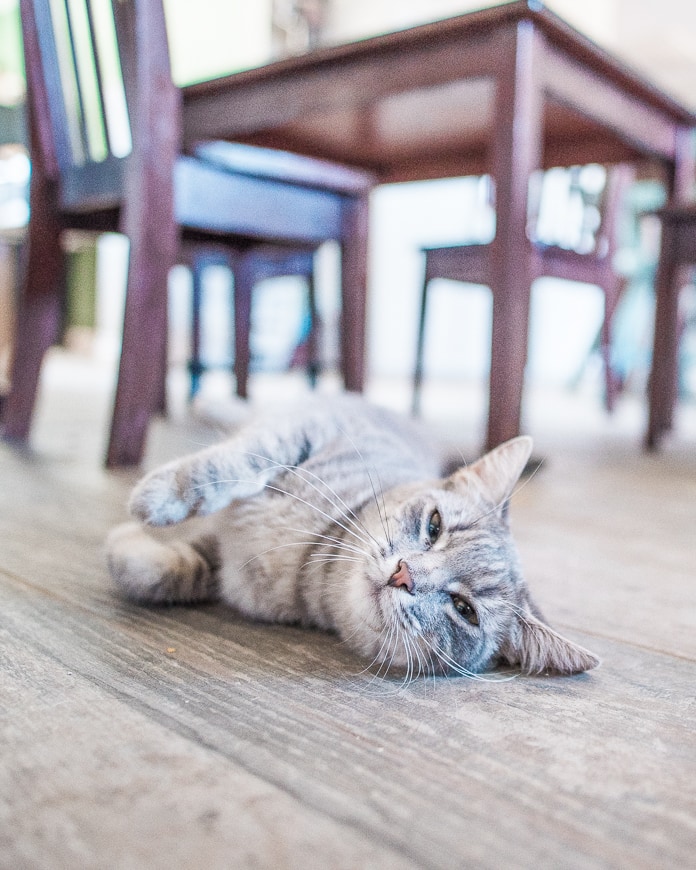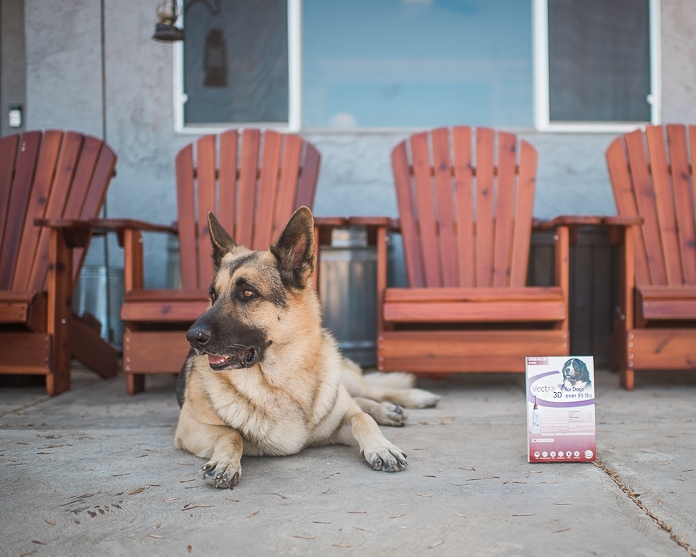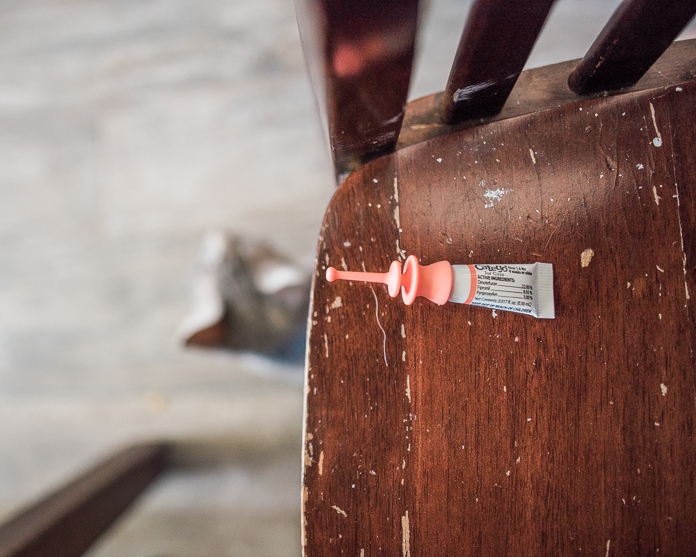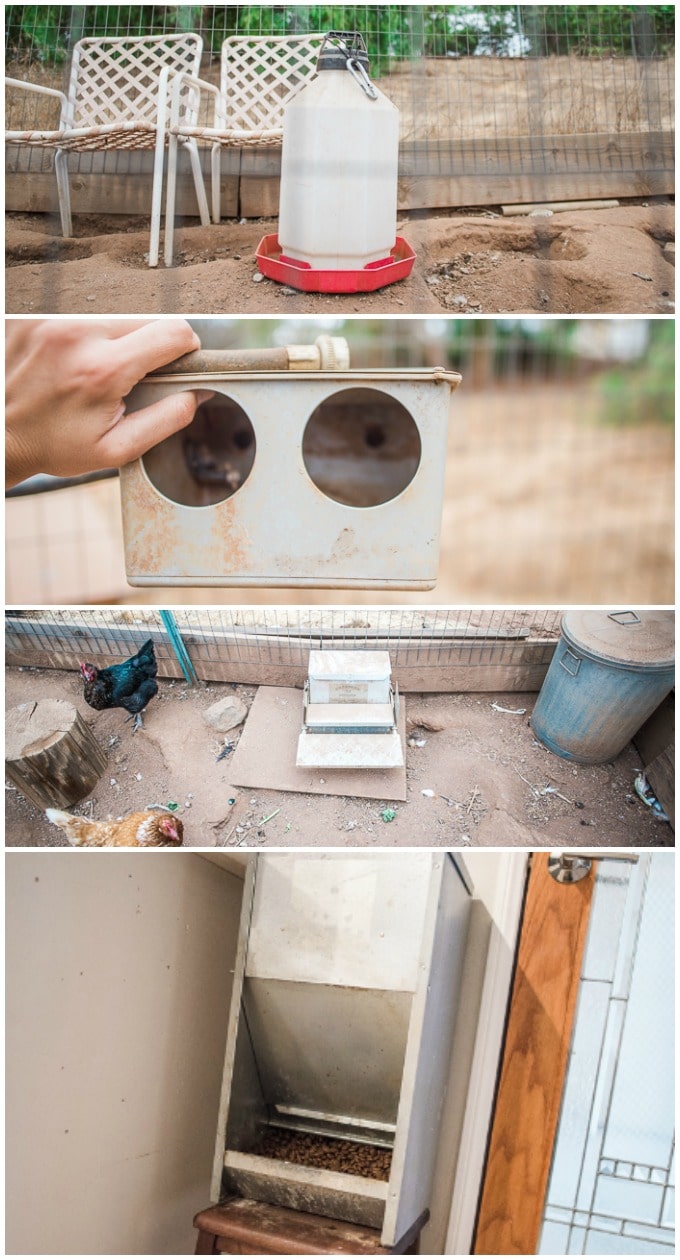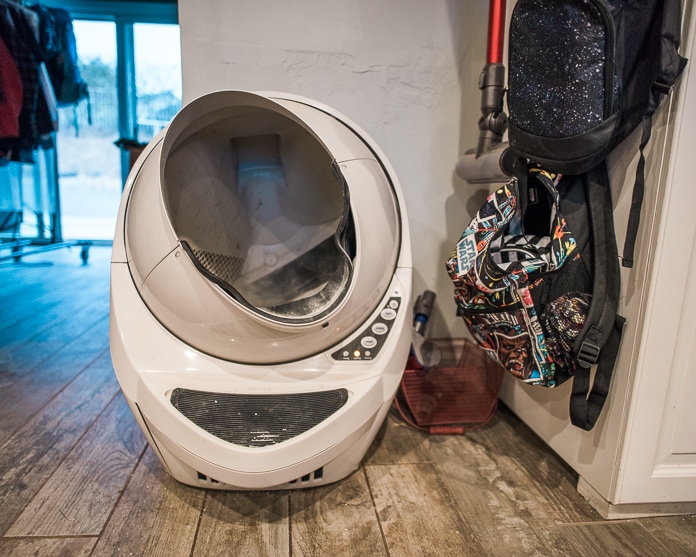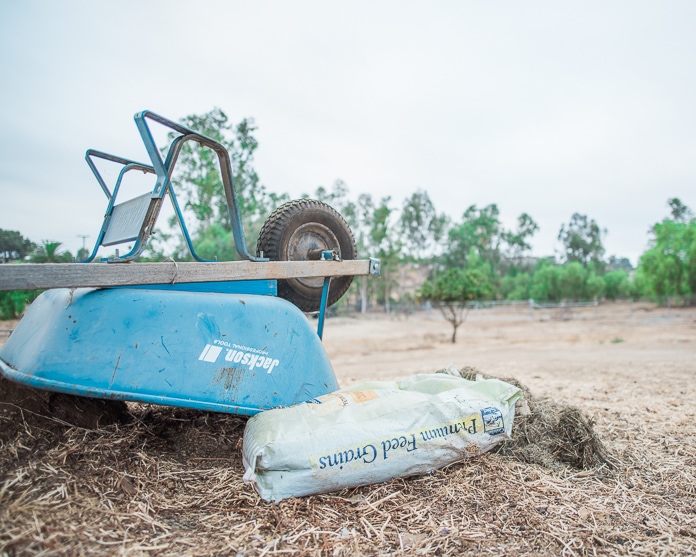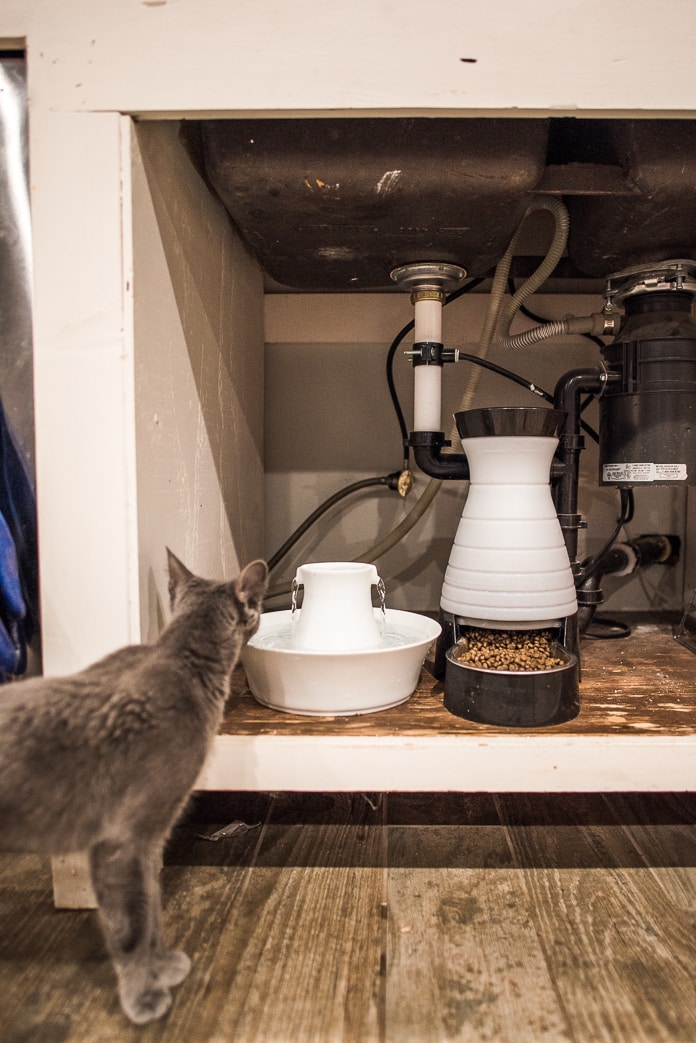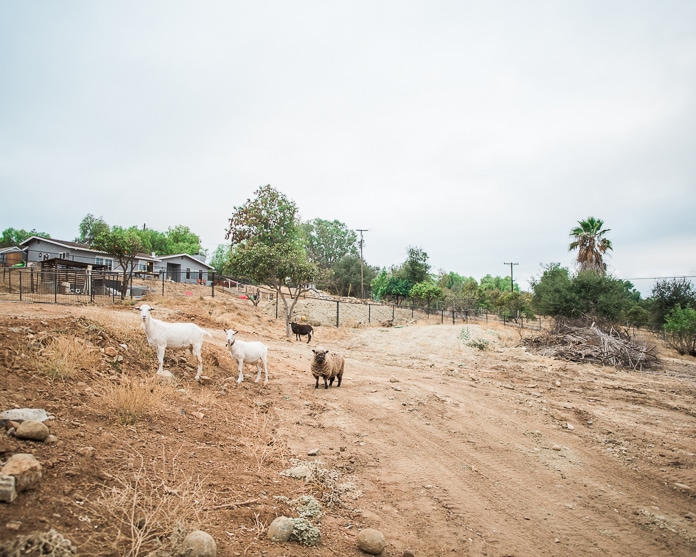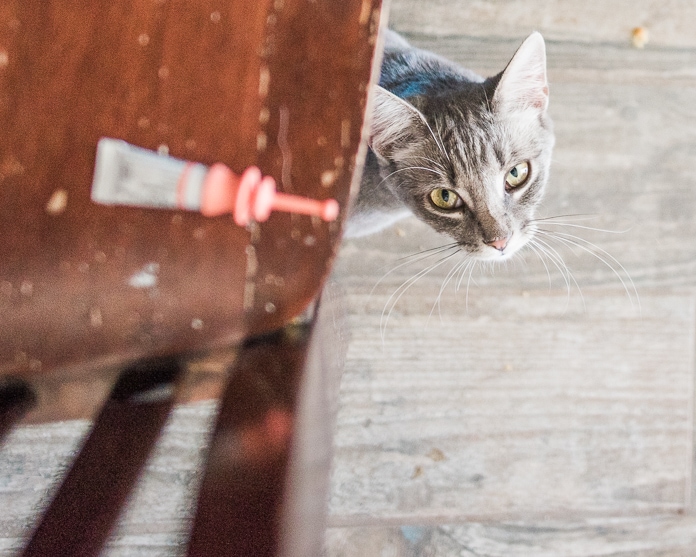This post is sponsored by Ceva Animal Health, the maker of Vectra® 3D for Dogs and Catego® for Cats.
Along with traveling about half the year, Nate and I own a low maintenance farm in the rural hills of San Diego. This is definitely one of the things we get asked about most. How on EARTH can we manage to be away for days, sometimes even weeks at a time, while still keeping a bunch of animals alive?
For us, the key has been starting slow and building up. Neither of us have a big background in farming, so we jumped in as best we could and tweaked a lot of things as we've gone along. Live, learn, and then get low maintenance!
6 Low Maintenance Farm Tips
Get easy animals
Don't start out investing in a cow or a horse! We began with dogs and cats, moved up to chickens and eventually wound up with some goats and sheep. We took the time to learn a lot about each animal and their individual needs before scaling too much.
We also networked with friends nearby who are very knowledgeable about animals as well as vets who make house calls, so we knew who to call in case we got into a jam.
Have a well thought out care schedule – and stick to it
We use Vectra® 3D for Dogs and Catego® for Cats to protect our dogs and cats from fleas, ticks and parasites. We learned quickly that pest control is definitely step one with just about any animal! Vectra® 3D for Dogs kills and repels 15 types of dangerous parasites that most other flea and tick products don't even touch, causing a “hot foot” reaction so pests that do encounter your dog don't even want to land on them.
Catego® for Cats is the only flea and tick product on the market that combines the powerful active ingredients Dinotefuran, Fipronil and Pyriproxyfen. Both are easy to apply without drips and messes, so we can easily keep our dogs and cats protected with a once-monthly application. We researched the products that we use on our animals in-depth, since we've learned the hard way that lax prevention can lead to lots of problems and high vet bills in the end. Note: Do not use Vectra® 3D on cats or Catego® on dogs.
Automate as much as you can
We have auto-feeders all over the property. I could not maintain my sanity – or my rigorous work schedule – if it was up to me to dole out food and water to all of these animals every single day. Instead, I can load up a week or two worth of food and into a trough system that each of the animals can access either by stepping onto a lever or pushing open a trap door with their snout. As for the water, most of these rely on a floater lever similar to what's in a toilet, measuring how much water is in the bowl and auto-filling up when it gets low. We also keep gravity drip-fed systems filled up as backup, in case technology fails us or one of the animals accidentally knocks the whole system over. We also have an auto-delivery arrangement with our local feed shop where the guys bring hay and supplemental feed when necessary and plop it directly into their troughs for us.
We also have an auto-changing cat litter system that is a GAME CHANGER. Our cats are indoor-outdoor except for one who refuses to set foot in the great outdoors (we rescued her and she apparently experienced some trauma as a kitten) so this has helped us in not requiring that we get someone to come and change her litter every single day when we're away. We can go up to five-ish days with this thing handling itself before the bag needs to be changed.
Know your seasons
In spring, it starts to get uncomfortably warm and the sheep need shearing. Shortly after that, the grass gets crispy so the goats need more grain and alfalfa supplementing than they do in late winter when things are lush and green. On farms around here, there's a fire season, tick season, harvest season and mating season. Animals need different care during each one.
Listen to your pet
Our cats kept hopping up on the counter to drink out of the faucet in lieu of sticking to their still water bowls, so we took a hint and got them a running water filtration fountain. When pets are happy with their situation, they're less inclined to be destructive and create messes for you to clean up.
Set up barriers
We've tried every situation from pens to rolling corrals to tethering to keep our animals in line. What worked best for us, ultimately, was to segment our property into several different areas with fencing and rotate the pets from space-to-space. The goats are both male, so they tend to turn on each other and fight a lot during mating season. With this setup, we can separate them when they're acting crazy. Same with keeping the dog away from the chickens. We even use baby gates and dutch doors to keep the cats out of certain spaces inside the house.
As you can see, keeping a low maintenance farm is all about setting up systems that work for your pets and your family. Organization is key, as is your selection of animals and the products that you use to support them.
Do you have any questions about low maintenance farms?
